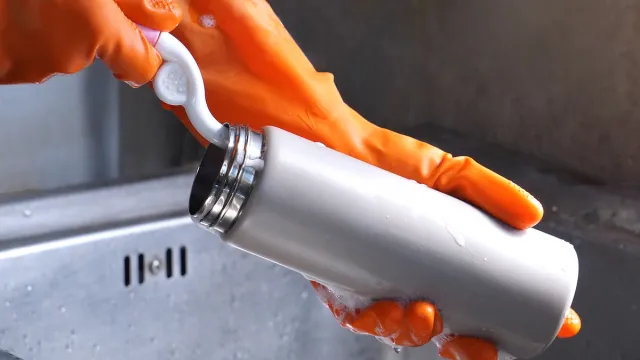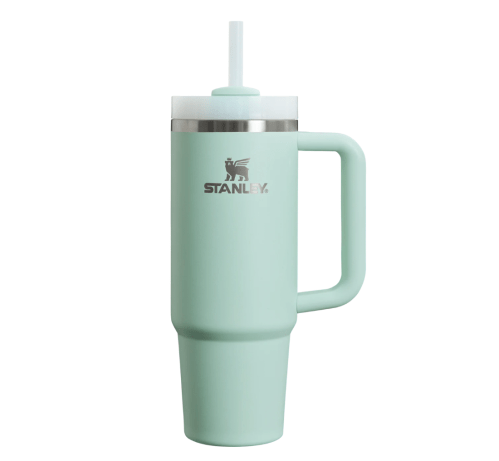Is Your Stanley Tumbler a Hotbed for Germs? Experts Reveal How to Clean It Right

If the size of a crowd is any indication, this year’s hottest item isn’t a luxury bag or cutting-edge tech gadget—it’s a lidded cup with a straw. The Stanley tumbler has taken over the internet, and, having conquered TikTok, is now likely causing mayhem at a store near you.
At least that’s what a set of viral videos from earlier this month seem to suggest. People recently shared their firsthand accounts of frenzied shoppers rushing to nab limited edition Valentine’s Day designs of the Stanley tumbler at Target. In those videos, customers are seen sprinting down the aisles and throwing elbows in hopes of scoring the popular cup.
However, as the tumblers gain traction on social media, so do their detractors. Influencer Skylar Ray Rose pointed out in a disturbing TikTok video that her own Stanley tumbler was full of mold despite cleaning it regularly. Her viral post and others like it have sparked a discussion on the proper way to rid your tumbler of dangerous germs.
RELATED: Five Below Sells Super Cheap Stanley Tumbler Dupes—Are They Just As Good?

The company itself says that its tumblers are dishwasher safe, but as cleaning experts point out, this method may not be sufficient given the product’s many nooks and crannies. Most of the time, you should clean your cup by hand between uses.
To do so, fill your tumbler with warm water and mild detergent, let it stand for five minutes, wash with a soft, damp cloth or sponge, and then rinse it and dry it with a clean towel, Stanley suggests.
However, the company acknowledges that “your product may need a deep clean occasionally.” To achieve this deeper clean, they recommend combining one part baking soda and one part warm water and soaking your cup for up to an hour. “After rinsing out this mixture, clean with mild detergent,” they write.
However, cleaning experts warn that even this method of deep cleaning may still fall short.
RELATED: What Happens If You Don’t Wash Your Water Bottle for a Month, According to Doctors.
Sabrina Tretyakova, an ISSA-certified cleaning technician working with the cleaning supply company Fortador, emphasizes that it’s important to take apart every removable piece of the cup before cleaning each one individually.
Rose points out that by squeezing the inner gasket that holds the straw, you should be able to pop off the plastic pieces on top of the straw’s lid, where she discovered the mold in her own cup.
Your straw, which can be a hotbed for the germs from your mouth, will also need extra attention, Tretyakova suggests. “A straw brush is ideal for cleaning the straw,” she says, adding that you can use dish soap and warm water to restore proper hygiene.
“The hard-to-reach areas around the lid and the straw are vulnerable if you do not clean them thoroughly. It can lead to bacterial and fungal proliferation and unpleasant odors that could affect the water’s taste,” she tells Best Life.
So, by all means—go grab the viral tumbler if you’re so inclined. But be sure to give it a proper scrubbing between each use, and aim for a more thorough cleaning at least once per week to avoid a harmful buildup of bacteria and mold.
For more cleaning tips sent directly to your inbox, sign up for our daily newsletter.